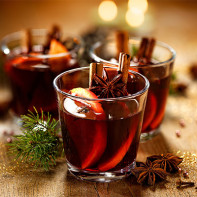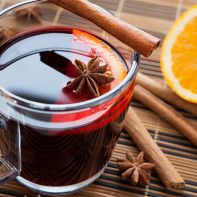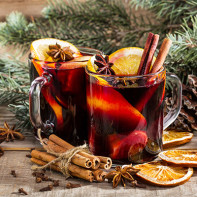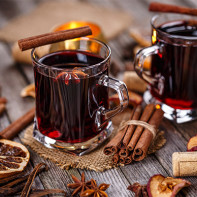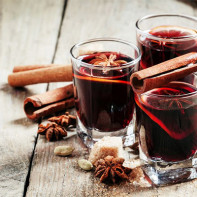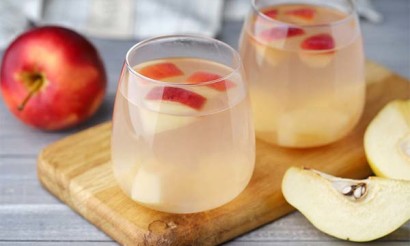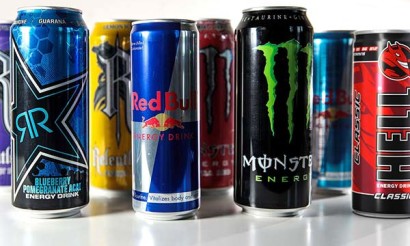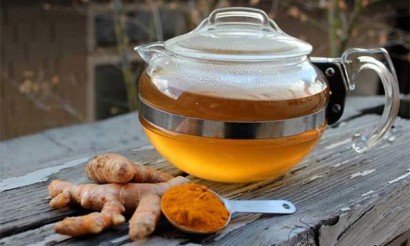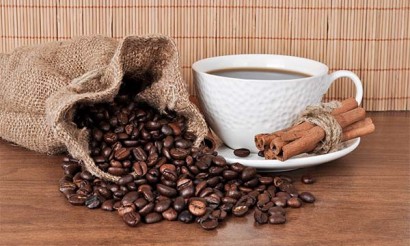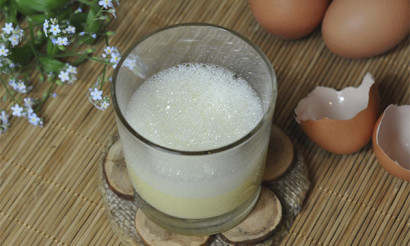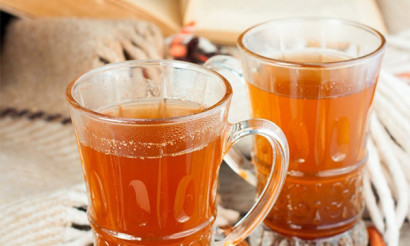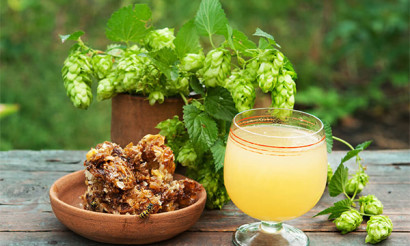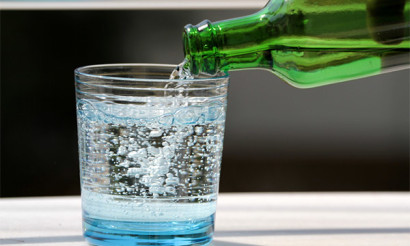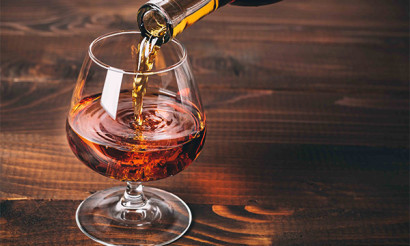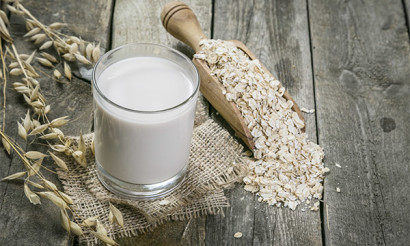Mulled wine: what is this drink, useful properties and recipes
One of the most popular home-made drinks is mulled wine. The low content of ethyl alcohol does not cause a strong intoxication, but only a feeling of warmth and comfort. Light alcoholic drinks allow you to warm up on a long winter evening, sit by the fireplace, relax and have a heart-to-heart talk with friends and family.
- What is mulled wine
- What is the difference between punch and grog and mulled wine
- Composition and calories
- What is useful for mulled wine
- General benefits
- For Women
- For Men
- For Pregnancy
- For breastfeeding
- For children
- When losing weight
- Can I drink mulled wine with gastritis?
- Is mulled wine useful with colds?
- Harm and Contraindications
- How to properly store mulled wine
- What wine is needed for mulled wine
- What spices are needed for mulled wine
- How to cook Mulled wine: Recipes
- Non-alcoholic
- Alcoholic
- In a multicooker
- How and with what to drink mulled wine
- Interesting facts
What is mulled wine?
Mulled wine is a drink made from red or white wine, spices and fruit. The obligatory addition is sugar (or honey). The base can also be beer and ale. In some recipes, cognac, various liqueurs or rum are added, but only in small quantities to add flavor.
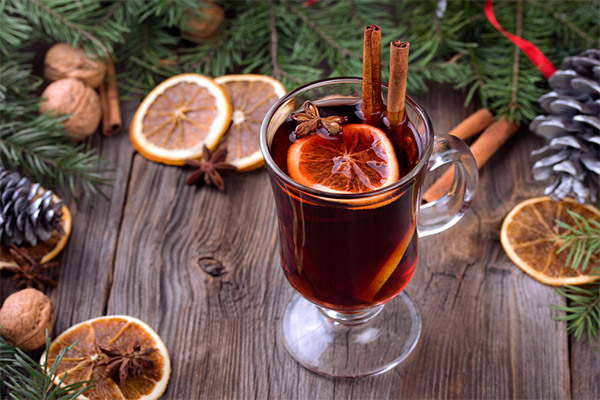
Alcoholic additives should not change the taste of mulled wine and turn it into diluted rum or cognac, but only add additional notes to the overall bouquet. Mulled wine is prepared by heating the wine to a temperature of 75-80 degrees, but never bring it to a boil. The ingredients are added at the initial stage of production, some spices are put in the finished product. There are many recipes for making mulled wine, the drink can also be non-alcoholic, when the basis are juices. It is prepared without adding water, and with water, and drunk hot. Sometimes dried fruits, fresh and frozen berries and nuts are added.
What is the difference between punch and grog and mulled wine
Punch and grog differ from mulled wine in composition and cooking methods. What they have in common is that these drinks are also heat-processed and drunk hot.
Punch is the collective name for a large group of hot cocktails, in which fruit juices or pieces of fresh fruit are added. The basis of punch is rum, but there are also non-alcoholic recipes. The homeland of the drink is considered India, and in Western Europe, hot cocktails were prepared as early as the 14th century. They included five ingredients.
The base was rum, which was diluted with water and heated. Then spices, fruit juice and honey were added. The cocktail had five ingredients, which is where the name "punch" comes from. The word has its roots in the Hindi language and comes from the word "punch," which translates to "five." In English, "punch" became "punch." There are now dozens of recipes for punch. The drink is served in wide and deep bowls. In Russia, this drink became popular in the 18th century. The fire punch was called "the drink of joy."
The grog is also drunk hot. It is made by diluting strong rum with water or weak tea. Some sugar is added to improve the taste. Grog can also be made without rum. In this version, vodka is mixed with sweet water.
Modern recipes make grog with aromatic and flavor additives. Cloves, ginger, other spices, sugar, and sometimes lemon are added to water. The syrup is brought to the boil, and only then is the necessary amount of rum poured in.
Composition and calories
As mentioned above, the composition of the classic mulled wine includes wine, spices (spices), fresh fruit, sugar and water. The composition of the drink, prepared according to modern recipes, can be traditional or extended, when many components are used. All the ingredients are easy to buy in the supermarket and specialty stores that sell spices.
Prepared mulled wine contains organic acids, ethyl alcohol, vitamins, trace elements found in wine, fruits and spices. When cooking it is not used boiling and simmering, so most of the useful substances are preserved.
Caloric value and energy value of the product depend on the composition of ingredients. On average, 100 ml of mulled wine contains 90-96 kcal (according to other sources - 130 to 135 kcal). The average energy value is 395 kJ.
A 100 ml serving contains:
- 1.1-1.5 g proteins;
- 0.9-1.2 g of fat;
- 12-14 g of carbohydrates.
The content of carbohydrates depends on the amount of sugar or honey and can significantly exceed the average figures.
How is mulled wine useful?
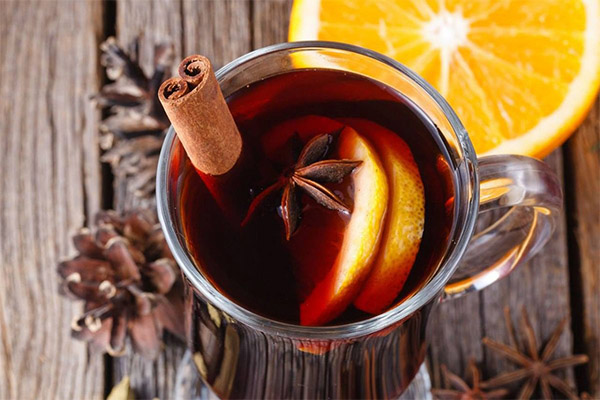
General benefits
The drink contains many useful and nutritious substances, its components have medicinal properties. Not only ordinary people, but also doctors do not deny the healing effect of wine, lemon and spices. The drink:
- Has a relaxing effect, warms and soothes;
- It helps to recover from infectious diseases;
- Bactericidal and antiseptic;
- Restores the immune system;
- Improves appetite;
- Helps to recover from strenuous physical and psychological stress;
- Useful for the prevention of colds;
- improves blood circulation;
- useful for low blood pressure, insomnia, avitaminosis;
- removes "harmful" cholesterol;
- activates "sluggish" digestion;
- Helps maintain the elasticity of blood vessels;
- contains antioxidants;
- improves kidney function;
- promotes the production of enzymes;
- It is useful for attacks of unreasonable melancholy and despondency;
- It improves mood.
Red wines contain a lot of resveratrol. Folk healers believe that this substance prevents the development of Alzheimer's disease.
Cholesterol levels can be lowered by wines made from Spanish Tempranillo grapes. They can reduce the level of "harmful" cholesterol by 10-12%.
Mulled wine contains tannins, tannin compounds. These are substances of the phenolic group, which have an astringent effect. They contribute to the removal of toxic substances, improve the absorption of vitamin C, have hemostatic properties, reduce the sensitivity of nerve endings and relieve itching.
Polyphenols are antioxidants. These organic substances prevent the formation of free radicals. The action of polyphenols is associated with a decrease in temperature, an anti-inflammatory effect similar to that of aspirin.
For women
The desire to "cheat time" and look younger than their years is natural for women. Flavonoids and antioxidants in wine and fruits can slow down the aging process, make the skin firm, healthy, smooth and elastic. Not only drinking mulled wine triggers the renewal processes but also the external application of this product. The liquid is applied with a sponge, massaging the skin, rubbing the mulled wine, leave for 10-12 minutes and wash off with warm water.
Women more often than men get upset because of trifles, moping and depression. Mulled wine helps to relieve stress, forget about the negative aspects of the day and calm down. If you drink it in moderation, it will be invaluable for stabilizing your mood.
For men
Traditional healers and official medicine have no special recommendations for the consumption of mulled wine by men. This drink is useful not only for general illnesses, but also for male ailments as an anti-inflammatory and antibacterial agent.
Still, the drink is not a cure. If medical drugs are prescribed, it is better to consult with a doctor, whether it is worth drinking alcohol at this time.
When pregnant
The opinion of doctors is unambiguous - alcoholic beverages should not be drunk during pregnancy. Ethyl alcohol spreads quickly through the body, easily overcomes the placenta and enters the fetus. Alcohol has a devastating effect on the baby's brain.
As a result of regular alcohol consumption, children are born with idiocy and other abnormalities of mental development, underweight, and physical abnormalities. The connection between pathologies and alcohol has been described by doctors of ancient Rome. In 18th-century England, an "epidemic of gin drinking" was described, resulting in the birth of many children with mental retardation and physical defects.
Nowadays the exact connection between a woman's drinking and sick offspring has been established. The expectant mother should overcome the desire to drink a glass of mulled wine, it is better to distract herself and quench her thirst with a non-alcoholic drink.
When breastfeeding
Baby doctors do not recommend breastfeeding mothers to consume even weak alcoholic beverages, which includes mulled wine. There is no safe dose of wine consumption. One can only wonder what calm babies are with alcoholics, they are almost always asleep. This is because ethyl alcohol penetrates into breast milk and acts as a sleeping pill.
As a result, the infant's daily rhythms of sleep and wakefulness are disturbed, and alcohol does nothing for the mental and physical development of the child. So making and tasting the drink will have to be postponed until after breastfeeding. Mulled wine also contains spices that can change the taste of milk, as a result, the baby may refuse to breastfeed early.
For babies
Alcoholic mulled wine is not given to children. An alternative is a drink made without wine. There are dozens of recipes for "baby" mulled wine. They are made with light and red grape juice.
The flavor creates a combination of juice, fruit and a moderate amount of spice. If the drink does not contain fragrant spices, it can be drunk not only by a child, but also by a nursing mother and a pregnant woman.
When losing weight
Mulled wine, like other alcoholic beverages, causes appetite, which is absolutely not necessary for people sitting on a diet to lose weight. Under the influence of alcohol, self-control is reduced and the danger of "falling off" increases. If a person who has had a drink or two, it is advisable to "burn off" the calorie deprivation with physical activity. For example, go to a sports field, to the swimming pool, walk instead of driving in a car or bus.
But strict diets completely exclude extraneous foods, so mulled wine will have to be abandoned. The drink contains not only caloric ethyl alcohol, but also sugar. This carbohydrate is a good energy drink, but it is not needed during the diet. Ethyl alcohol also prevents the breakdown of carbohydrates and fats, which disrupts the natural metabolism.
Can I drink mulled wine with gastritis?
Gastritis is a disease in which the mucous membrane of the stomach is inflamed. Mulled wine, like other alcoholic beverages, irritates tissues and leads to even more inflammation and spasmodic pain. Some fruits - lemons, apples, tangerines, oranges, and many spices - have an irritating effect. Therefore, in acute gastritis this drink should not be included in the menu.
If a person is diagnosed with chronic gastritis, mulled wine can be consumed in the period of remission, when the mucous membranes are not irritated by spicy, acidic food and alcohol. You should choose cocktails of the lowest strength and drink only small portions.
Is mulled wine good for colds
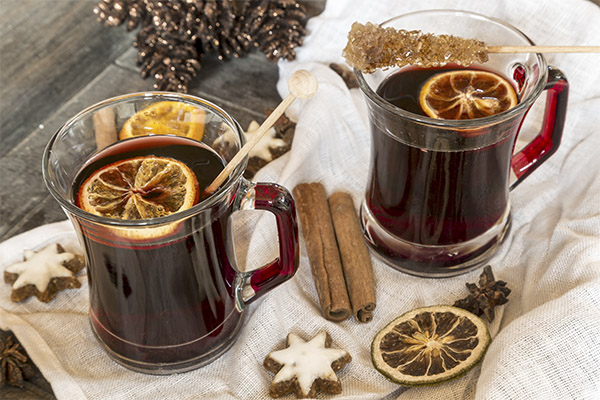
Cocktails with low alcohol content cannot prevent colds, and alcoholic drinks have no effect on viruses. But during illness, moderate consumption of alcohol helps to "sweat it out" under the covers, relax and unwind. Lemons and oranges, spices included in the cocktail contain trace elements and vitamins that are useful for boosting the immune system.
With a cold, mulled wine is good to drink in the evening, before going to bed. The hot wine will relieve the symptoms of illness and improve sleep. It is also useful to inhale the wine vapors.
Harm and contraindications
With moderate, periodic consumption mulled wine is not harmful, but a large amount drank is the cause of high blood pressure, redness of the face and headache. Mulled wine should not be drunk by diabetics, as the wine contains sugar. The drink becomes dangerous if the person suffers from an insulin-dependent form of the disease. It can go into the active phase of gastrointestinal diseases and GERD - gastroesophageal reflux disease.
The drink is not recommended if prone to heartburn, as spices can cause intestinal irritation in healthy people. It should be excluded in case of individual intolerance to fruits and certain spices and wines. Allergies can be suspected with the appearance of rash, nausea, swelling and general malaise.
How to store mulled wine correctly
Mulled wine is served hot, the shelf life is limited by the temperature of the product. Only a good thermos will help to preserve the drink (but no more than two hours). During this time the ingredients of the cocktail are steamed and the drink thickens. With a longer storage the wine will "suffocate", the taste will change, and the original flavor will disappear.
Cooled mulled wine should not be stored, as this product is consumed only when hot, in a cooled state the original taste will be lost. The drink can be stored in a thermos, but also no more than a couple of hours.
If you plan to store the mulled wine in a thermos for more than an hour, extract the lemon from it. The citron will release bitterness, which will cause the drink to acquire an undesirable flavor.
What wine to make mulled wine
Wine for the drink is chosen based on the preferences of the owners of the house and guests. But there is no guarantee that using an unfamiliar product will give the best results. The principle "the more expensive the wine, the better the mulled wine" does not always work. Therefore, lovers of this exquisite drink adhere to their own experience gained in practice.
Dry wine is good for making a drink, it is a traditional component of the blend. Dry wines are made without dyes, flavor additives, preservatives and other "improving" impurities. The production technology does not provide for the introduction of foreign substances. These wines do not have a pungent smell and a luscious taste, and are refreshing and easy on the stomach. In dry wines the sugar content does not exceed 3g per 100ml. This fact allows you to add sugar to mulled wine and make the drink sweet.
A semi-dry wine differs from a dry wine only in the increased sugar content (from 3 to 12 grams per 100 ml of product). They are also made without additives, sweeteners and preservatives. They are not too sweet, which makes it possible to make mulled wine with sugar or honey.
Semi-sweet wines can have unpredictable effects, especially the cheap varieties. Winemakers often change the classic recipe and introduce natural and artificial additives. They acidify wines with citric acid, add flavorings, increase strength, and tint with food pigments. The end result is a product that is not suitable for making mulled wine, as the additives behave unpredictably when heated. In addition semi-sweet wines have a rather high content of ethyl alcohol (18-22 degrees).
Connoisseurs of alcoholic beverages advise to take only young semi-dry and dry wine. The strength of the drink should be no less than 7, but no more than 13 turnover percent (degrees). It is better to choose a product of a proven, well-known winery.
The basis of the composition of mulled wine can be both white and red wine. In the classic recipes mulled wine is made only from red wines.
White wines should not be heated to a temperature over 50 degrees, as their flavor qualities will change for the worse if heated too much. Red wines can withstand heating up to 90 degrees.
Cabernet, Vranac, Dolcetto, Gamza and other medium-value wines would be a good base for mulled wine, while the semisweet options include Hvanchkara, Cahors or Kindzamara. But Sangria is not considered a good choice by all lovers of alcohol. However, there are complex recipes that include this popular product.
What spices are needed to make mulled wine
Spices are chosen based on tastes and preferences. There is always room for experimentation and culinary imagination. The choice is limited by the availability or unavailability of a particular spice on sale. This sometimes makes it necessary to abandon complex recipes. The right selection and combination of spices is the key to obtaining a unique, fragrant and delicious product.
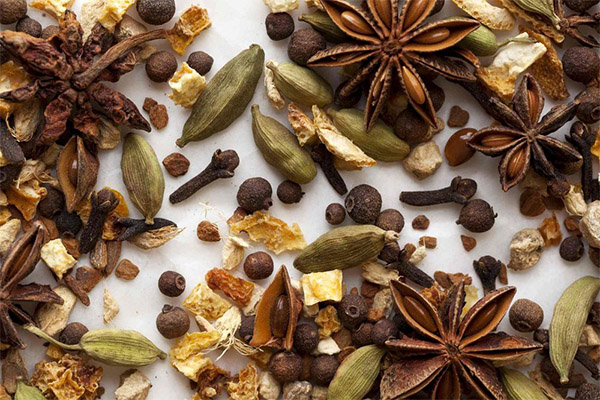
Cinnamon and clove seeds are necessarily added to the mulled wine. Other spices are added selectively, depending on the recipe. A general list of spices include:
- cloves;
- cinnamon;
- ginger;
- anise;
- mint leaf;
- cardamom;
- pepper;
- bay leaf;
- saffron;
- melissa;
- lemon zest;
- nutmeg;
- badian;
- coriander;
- barberry and others.
- Cloves give aroma gradually, the intensity of the smell depends on the temperature of the liquid. The hotter the drink, the stronger the cloves open. This spice is suitable for both white and red wines.
- Cinnamon is also a classic ingredient. Experienced cooks advise taking sticks, not powder. The ground product has a less intense smell and a less intense flavor.
- Nutmeg brings tart, spicy notes. This spice gives the wine a slight burning sensation. Nutmeg is added to wine at the initial stage of vintage, in the form of crushed pieces or powder.
- Anise combines well with the aromas of cardamom and cloves. It is used in many recipes, but the smell makes the drink peculiar. The spice is put in the wine at the end of the cooking process.
- Pepper adds pungency and flavor, creates spicy accents. Black, red, allspice, Jamaican and other types of peppers, "peas" and ground product are used.
- Ginger gives a spicy touch and dominates the bouquet of flavors, if the other spices do not emit pungent odors.
- Badian has a more subtle flavor than its cognate anise. It is placed in the pot at the beginning of cooking, before heating.
- Saffron is better added if the number of ingredients is small. This spice has a self-sufficient, well-recognizable flavor.
- Cardamom can also be classified as a traditional spice for mulled wine. The spice is combined with ginger, saffron, and badjan.
- Laurel leaf is used infrequently. It is added after removing the pot from the fire. This spice is more for soups than for wine. But some recipes include this ingredient.
- Mint is suitable for white wine, but it is difficult to match its bright, recognizable smell with matching spices. But there are recipes in which a mint leaf is introduced.
You can buy mulled wine spice kits in stores. They are a mixture of spices and are designed for a specific recipe. The ingredients are ground to powder, which is not too good for the final quality.
How to make mulled wine: recipes
There are dozens of recipes for making mulled wine. Among them there are traditional and new, simple and complex. Drinks differ in the number of components, the temperature of heating, the type of fruit additives. Although the basis of the drink is diluted wine, there are quite a few non-alcoholic recipes.
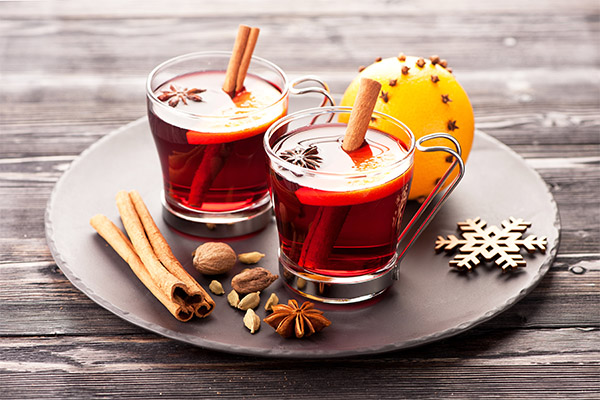
Non-alcoholic
Non-alcoholic mulled wine is made with ready-made grape juice. You have to buy juice, not nectar or a fruit drink. For the classic non-alcoholic recipe you need:
- 2 liters of grape juice (red);
- a small piece of ginger 2-3 cm³;
- medium sized lemon;
- 1 cinnamon stick;
- A pinch of ground nutmeg;
- 2 to 3 sprigs of badjan.
You will also need a 2.5 liter saucepan, a ladle, a spoon, and a knife. Non-stick, ceramic or enameled pots are also ideal. Steel, cast iron and aluminum saucepan is not suitable, as the juice will react with the metals and the taste of grape juice will change. The preparation involves the following steps:
- Pour the juice into the pot and turn on the stove, heat the liquid until the first bubbles and remove it from the heat without allowing it to boil. In this recipe, the temperature should not exceed 80 degrees.
- Lemon is cut into half rings or slices, along with the skin, remove the seeds.
- Put in a pot spices and add lemon.
- Stir the liquid, cover and leave for 30 minutes.
When the time comes to pour the mulled wine, the drink remains hot (about 70 degrees Celsius). That's why they take tableware made of materials that do not conduct heat. The drink is served in thick-walled glass mugs and glasses. Ceramic mugs with handles will also do. Pour mulled wine with a ladle.
Alcoholic
Alcoholic mulled wine is also prepared in ceramic, enamel or Teflon dishes. The cook will need:
- 2 bottles of dry red wine of 0.75 liters;
- 2 small oranges;
- 2 cinnamon sticks;
- A teaspoon of ginger powder;
- 5 cloves;
- half a spoonful of crushed nutmeg;
- 3 grains of cardamom;
- 2 star anise;
- 4 tablespoons of granulated sugar.
The single ground ingredient in this recipe is nutmeg. You can take whole crushed nuts instead of powder. The preparation involves the following steps:
- In a small pan with non-stick coating poured all the spices and pour cool water (100-150 ml).
- Place the container on the stove, heat it, let it simmer a little and leave it to cool for 10 minutes.
- The liquid is strained through a sieve and poured into a pot of at least 2 liters.
- Pour the wine, add sugar and mix the ingredients.
- Oranges are cut in slices and put in a saucepan. You can simply squeeze out the juice and pour it on top.
- Turn on the stove on medium, heat the liquid until it bubbles, but not to a boil.
- Remove the pan from the stove, keep the product under a closed lid for a few minutes.
- Pour into mugs and serve.
In the multicooker
The multicooker allows you to prepare dozens of dishes, and mulled wine is no exception. This household appliance provides uniform heating and allows you to keep the finished product warm for a given time. To prepare the drink according to this recipe take:
- 1 bottle (0.75 l) of white dry wine;
- 15 clove seeds;
- 2 to 3 starred cloves of badjan;
- 7 almond kernels;
- 2 slices of ginger root (dried) of 2-3 cm³;
- 1 stick of cinnamon;
- a medium-sized orange;
- a handful of raisins;
- half a shot of brandy;
- 2 tbsp. (no topping) sugar.
Mulled wine is prepared in the following order:
- Multicooker turn on, pour the wine into the saucepan of the device, put the mode "Heating".
- In the same place put all the spices. Almond nuts are pre-chopped.
- Close the lid tightly and heat the wine for 10 minutes.
- Oranges are cut in half, juice is squeezed out of one half right into a pan, and the second half is chopped and put into wine.
- Close the lid and leave the liquid to warm for another 20 minutes.
- After that, turn off the multicooker and keep the drink in a closed container for half an hour.
- Mulled wine is ready. Pour the drink into portions and serve.
How and with what to drink mulled wine
Mulled wine is a self sufficient drink. It is often served after the meal when all guests have satisfied their hunger. It is drunk slowly, enjoying the aroma, in small sips. You don't have to do it quickly, since the drink is hot.
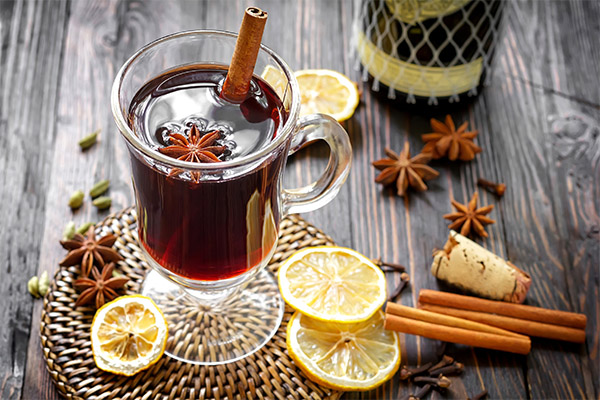
But there are no general rules, so some home cooks serve mulled wine to meat, fish and poultry dishes, and also combine it with desserts. European countries have different traditions for drinking this drink.
- In Germany, at festive markets and festivals they snack on cakes, pastries, chocolate and chocolates.
- The Swedes consume this wine product with smoked fish and make a variety of canapés with sharp varieties of cheese.
- In the Netherlands it is consumed with buns, cakes, doughnuts.
- In Russia, the Republic of Belarus, Ukraine combine with any products. It can be sausages, fried hams, baked meat, peanuts and other nuts, pancakes with meat filling, unsweetened buns.
- Austrians serve pastries and cakes.
Can you drink it cold?
As it cools, it loses its taste. Instead of a refined delicacy, it tastes sour and tasteless. It is possible to drink a cold drink, of course, but it is unlikely to give pleasure. Therefore, it is recommended to prepare a drink according to the number of participants at the feast and as much as they can drink.
Interesting facts
- Drinks similar to mulled wine were made back in ancient Rome. Wine was mixed with spices known at the time, but not heated. The custom of heating wine appeared in the 9th-10th centuries in the countries of northern and central Europe. It is known that a popular basis for mulled wine was Bordeaux, to which was added the Alpine herb galangal (aka kalgan).
- The Russian name "mulled wine" has German roots. In that language it sounds like "glhender wein" ("glhender wein") - "hot, flaming wine. Perhaps this name came to Slavic countries through Poland, because there the drink is called "glintwajn" ("glintwajn").
- This wine product is also popular in France, where it is called "vin chaud," which also translates as "hot wine.
- According to German standards, the alcohol content of mulled wine sold at fairs and food establishments should be at least 7 percent.
- As the basis of the drink, it is better to choose high-quality Georgian, Russian or Moldovan wine or medium-value products made in the United States, Greece and other countries. Vintage, high-quality wines have a refined taste and a special "signature" flavor. Heating and additives will change their quality for the worse.
«Important: All information on this site is provided for informational purposes only for informational purposes only. Before applying any recommendations, consult a health care professional. consult a health care professional before applying any recommendations. Neither the editors nor the authors are liable for any possible harm caused by materials."

